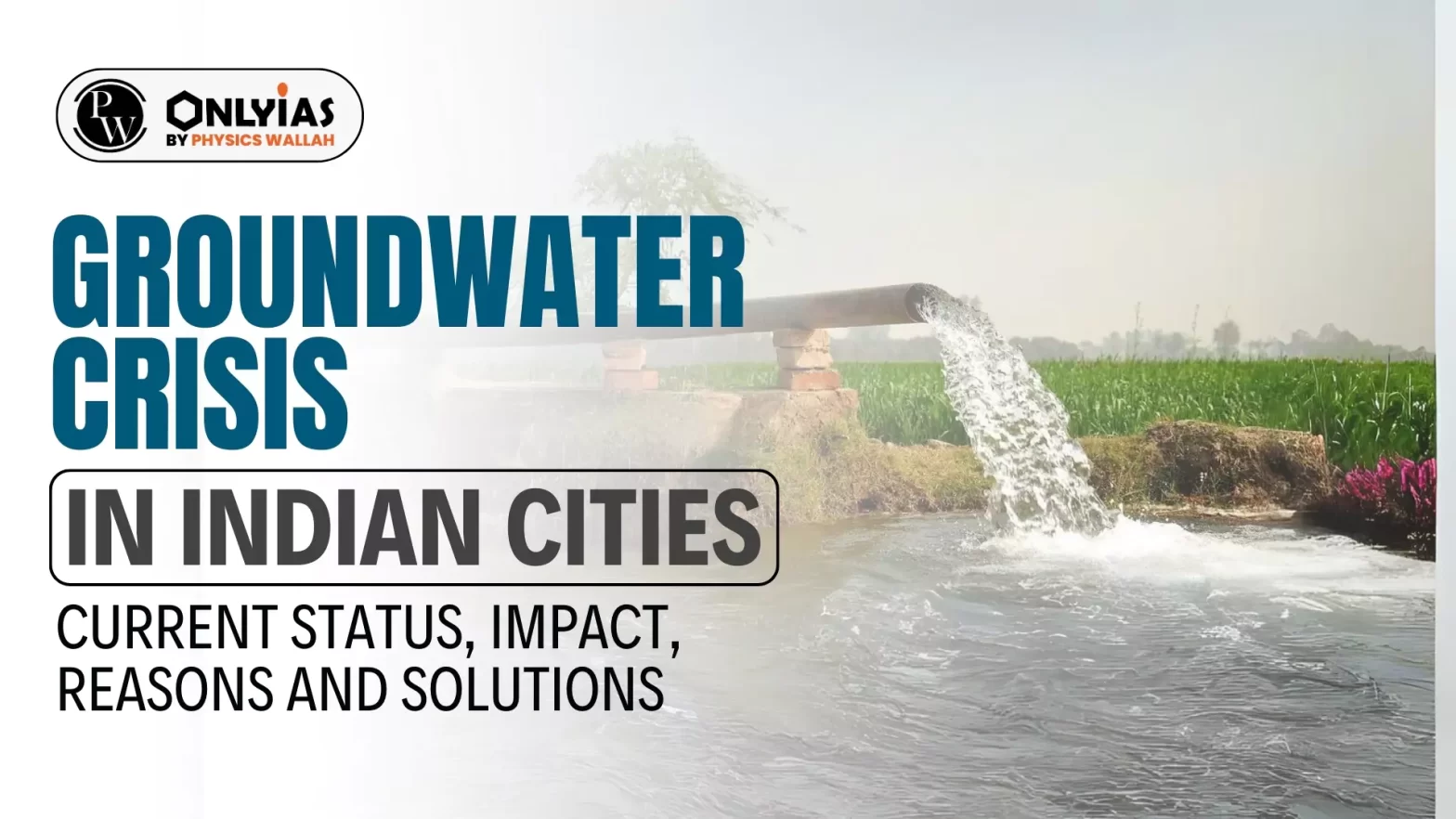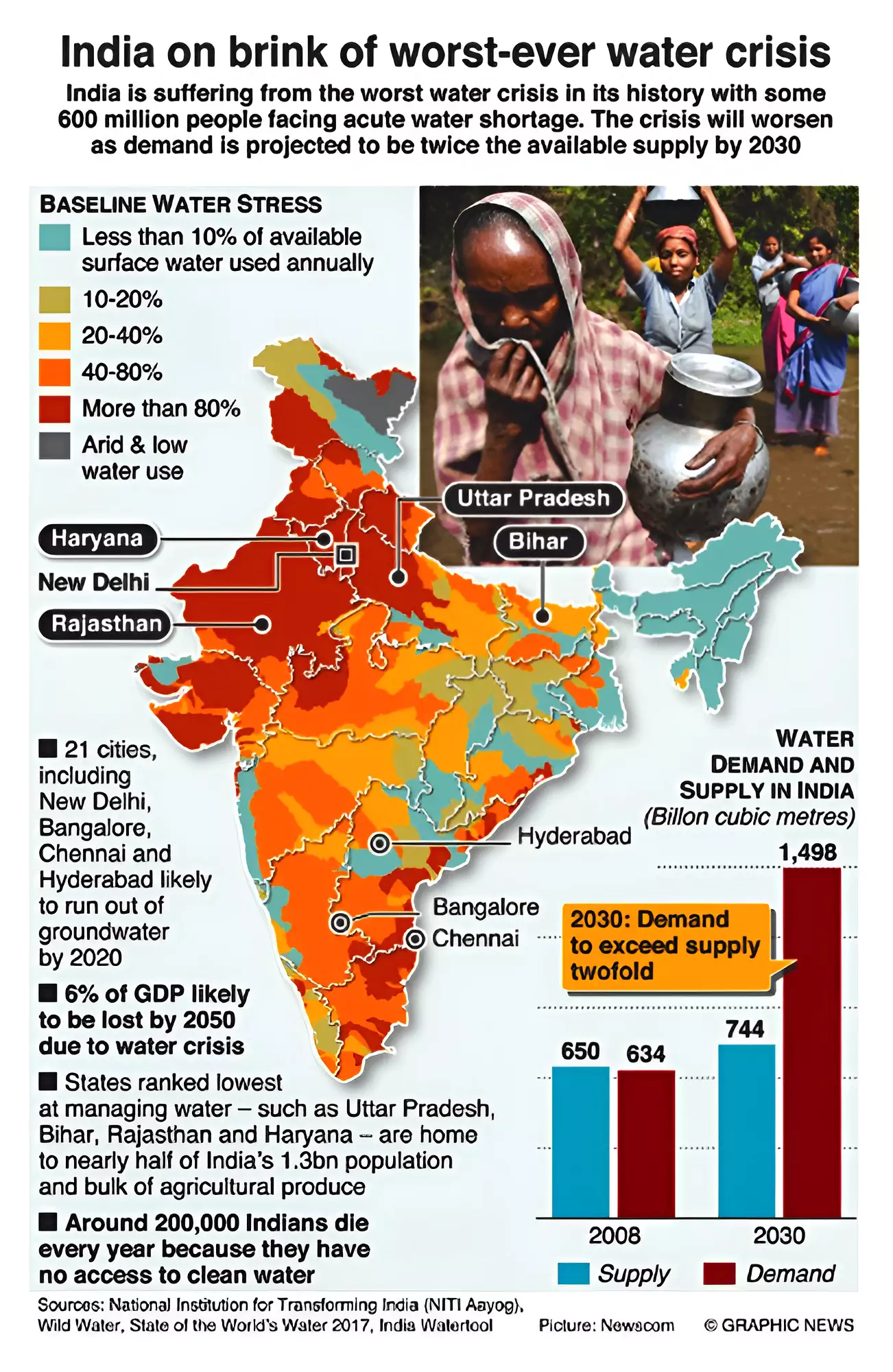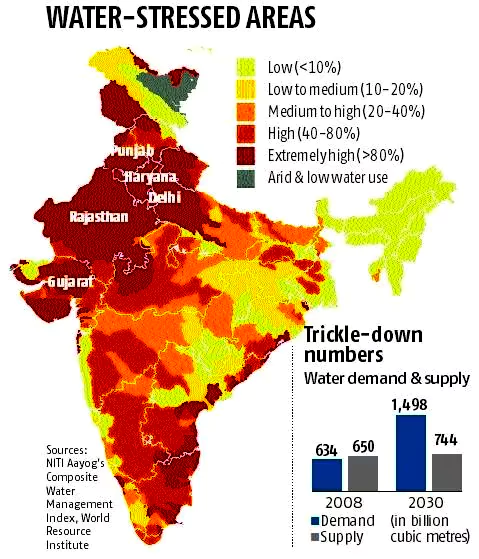![]() 11 Mar 2024
11 Mar 2024

This Article is based on the news “Bengaluru water crisis: Is the southern metropolis heading towards Day Zero?” which was published in the DownToEarth. Bengaluru is facing a severe water crisis attributed to a prolonged drought.
| Relevancy for Prelims: Water Resources, Water Conservation, Pollution, and State Of Global Water Resources Report 2022.
Relevancy for Mains: Groundwater Crisis in Indian Cities: Current Status, Impact, Reasons and Way Forward. |
|---|
 Risks for Day Zero: Around 30 localities under the Bruhat Bengaluru Mahanagara Palike (BBMP) are receiving water on a rotational basis every alternate day.
Risks for Day Zero: Around 30 localities under the Bruhat Bengaluru Mahanagara Palike (BBMP) are receiving water on a rotational basis every alternate day. | CWMI: The index evaluates states on nine broad sectors and 28 indicators, including groundwater, irrigation, farm practices and drinking water. |
|---|

Government Initiatives to Preserve Groundwater
|
|---|
The Watershed Management Project of Gujarat:
|
|---|
| Prelims PYQ (2020):
Consider the following statements: 1. 36% of India’s districts are classified as “overexploited” or “critical” by the Central Ground Water Authority (CGWA). 2. CGWA was formed under the Environment (Protection) Act. 3. India has the largest area under groundwater irrigation in the world. Which of the statements given above is/are correct? (a) 1 only (b) 2 and 3 only (c) 2 only (d) 1 and 3 only Ans: (b) |
|---|
| Mains Question: “The ideal solution to depleting ground water resources in India is a water harvesting system. “How can it be made effective in urban areas? [250 Words, 15 Marks] |
|---|
| Must Read | |
| NCERT Notes For UPSC | UPSC Daily Current Affairs |
| UPSC Blogs | UPSC Daily Editorials |
| Daily Current Affairs Quiz | Daily Main Answer Writing |
| UPSC Mains Previous Year Papers | UPSC Test Series 2024 |

<div class="new-fform">
</div>
